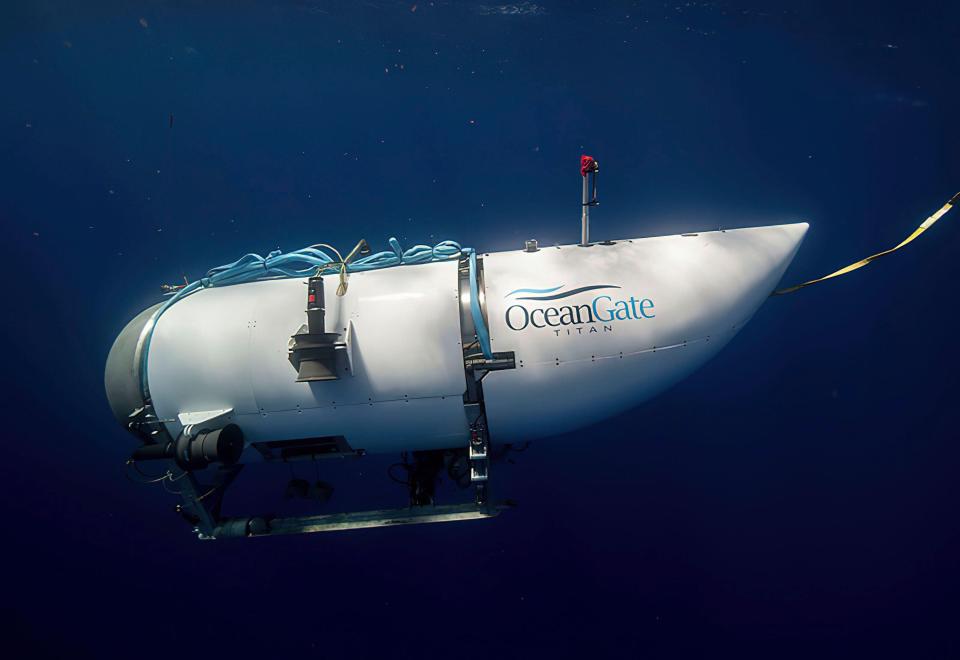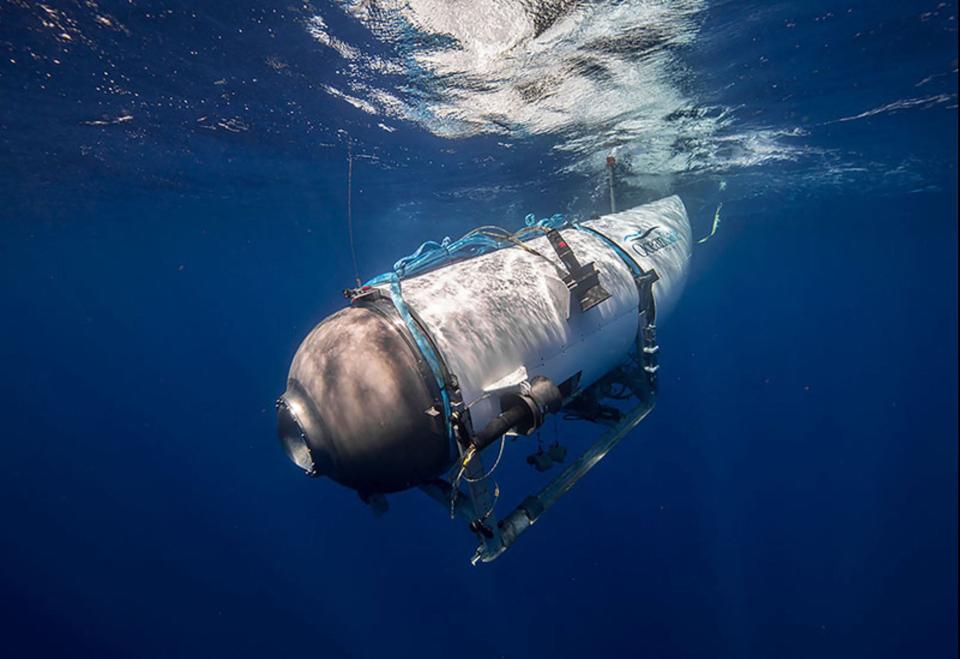All five passengers on missing Titanic submersible dead after catastrophic implosion
Following an urgent race to recover a 22-foot submersible that held five men on board to see the Titanic, search and rescue teams found Thursday morning outer parts of the Titan near the site of the Titanic wreckage. OceanGate, the company that led the mission, said the men on board are dead.
“This is a very sad time for the entire explorer community, and for each of the family members of those lost at sea,” the company wrote.
The debris found on the ocean floor about 1,600 feet from the bow of the Titanic was “consistent with catastrophic loss of the pressure chamber” in the submersible, said Rear Admiral John Mauger of the U.S. Coast Guard during a press conference Thursday afternoon. Coast Guard officials said it’s too early to tell when the Titan imploded.
The Coast Guard said families of the five people on board have been notified. For live updates on this disaster, read USA TODAY's live blog here.
What happens next in Titan rescue mission?
US Coast Guard officials said remote operating vehicles, also known as ROVs, would remain operating on the sea floor around the Titanic and investigate the debris field.
“Right now, again our thoughts are with the families and making sure that they have an understanding as best as we can provide of what happened and begin to find some closure,” an unnamed official said during the press conference.
Mauger said he did not know whether the Coast Guard would be able to recover the bodies of the five passengers on board of the Titan. "This is an incredibly unforgiving environment," he said.
Where is the submersible?
On Thursday, search and rescue crews discovered a "debris field" near the Titanic, the Coast Guard said. After an evaluation of the debris, the Coast Guard determined the debris contains pieces of the Titan, including a landing frame and a rear cover from the vessel. The debris was discovered after the sub was expected to have run out of oxygen supply.
"A debris field was discovered within the search area by an ROV near the Titanic," the Coast Guard wrote on Twitter.
A Coast Guard official commended the vast search efforts that led to Thursday's findings during the press conference.
"We’ve really had the right gear on site and worked as swiftly as possible to bring all of the capabilities we had to bear to this search and rescue effort," the official said. "It was a huge international multi-agency effort to make this happen.”

What happened to the Titan?
On June 16, the sub and its support ship departed from St. John's in Newfoundland, Canada. Two days later, the submersible began its dive to see the Titanic, which is about 370 miles off Newfoundland and 12,500 feet deep in the North Atlantic Ocean. About one hour and 45 minutes into the dive, the Canadian support ship the Polar Prince, which was tasked with monitoring the submersible, lost all communication with the vessel.
OceanGate said it was equipped with a 96-hour supply of oxygen. That would have lasted until Thursday morning. The Coast Guard led the frantic rescue mission that employed U.S. and Canadian ships, aircraft and other equipment. As of Wednesday, search crews were scouring an area of the ocean roughly two times the size of Connecticut.
Who were the passengers?
The five men who set out to see the Titanic in the submersible included OceanGate's CEO Stockton Rush, British billionaire explorer Hamish Harding, French maritime and Titanic expert Paul-Henry Nargeolet and a father and son from one of Pakistan’s most prominent families, Shahzada Dawood and Suleman Dawood.
"These men were true explorers who shared a distinct spirit of adventure, and a deep passion for exploring and protecting the world’s oceans. Our hearts are with these five souls and every member of their families during this tragic time," OceanGate said in a statement Thursday.
Rush, 61, founded OceanGate in 2009. He was also the co-founder of OceanGate Foundation, a non-profit organization "which aims to catalyze emerging marine technology to further discoveries in marine science, history, and archaeology," according to the company's website. In an interview with CBS Sunday Morning last year, Rush said: "What I worry about most are things that will stop me from being able to get to the surface."
Harding, 58, was chairman of Action Aviation, a global sales company in business aviation. He held three Guinness World Records related to his explorations by plane and into the deep ocean. He had also been to space. “Due to the worst winter in Newfoundland in 40 years, this mission is likely to be the first and only manned mission to the Titanic in 2023,' Harding wrote in a Facebook post announcing he would be aboard The Titan.
Nargeolet, 73, was director of Underwater Research for E/M Group and RMS Titanic, Inc. He successfully dived in a submersible to the site of the Titanic wreckage 37 times and "supervised the recovery of 5,000 artifacts," according to EMGroup's website, which also says he's "widely considered the leading authority on the wreck site."
Shahzada Dawood, 48, was on the board of trustees for the Dawood Foundation, an education nonprofit, according to the World Economic Forum, the board of the SETI Institute, a non-profit research organization, and he served as vice chairman on the board of Pakistani Engro Corporation. His son, Suleman Dawood, 19, loved science fiction, solving Rubik’s Cubes and playing volleyball, the New York Times reported.
Shahzada Dawood's older sister told NBC News she was "absolutely heartbroken" over the deaths.
"I feel like I’ve been caught in a really bad film, with a countdown, but you didn’t know what you’re counting down to," Azmeh Dawood said. "I personally have found it kind of difficult to breathe thinking of them."
What did the sub look like?
The submersible, owned by the Washington-based private company OceanGate Inc. , was 22 feet long and weighed 25,000 pounds. The vessel was designed to hold five people and descend 13,123 feet into the ocean, according to the company. It had a titanium crew compartment, a carbon fiber hull and one toilet on the inside.
The cost for a trip was $250,000, according to OceanGate. The company runs commercial projects, scientific research and exploration in deep water. After the submersible's disappearance, information surfaced showing there were prior concerns about the safety of the group's expeditions.

Contributing: Jeanine Santucci, Isabelle Butera, Javier Zarracina, Janet Loehrke and Grace Hauck
Contact Kayla Jimenez at kjimenez@usatoday.com. Follow her on Twitter at @kaylajjimenez.
This article originally appeared on USA TODAY: Missing Titanic sub found: No survivors after catastrophic implosion

